Innocent, Helpless Germans: Burned Alive, Covered in Excrement, Starved, Driven to Insanity
How the Allies created the greatest German refugee crisis for women and children, two million died without mercy
by John Wear
NURSING INFANTS suffer the most, as their mothers are unable to feed them, and frequently go insane as they watch their offspring slowly die before their eyes…
…Typhus was widespread throughout the entire transport and the number of deaths grew with each passing day…
The stated rationale during the war for the transfers had been to remove a cohort of dangerous Germans — above all, fit men of military age — who might threaten the security of the countries in which they lived. Instead, it had been women, children, and old men who had been deported, while the fit men had been held back for slave labor.
Editor’s Comment: The aftermath of WWII, known as “History’s Most Terrifying Peace“, is intentionally ignored or downplayed. The phrase “An Eye For An Eye“ is most commonly evoked as justification. We invite readers to decide for themselves if this phrase is an accurate characterization of the scale and degree of brutality unleashed upon not only ethnic Germans, but also, the eastern Europeans who did not consent to becoming the slave-victims of Soviet Red Terror behind the Iron Curtain. The Allies have a lot to answer for. The detrimental impacts and consequences of the decisions by the Allied leaders are being felt by the descendants of the Allied forces in countless nation states today.
This article is one of an ongoing series describing the violent and horrific nature of the forced expulsions of ethnic Germans from their home lands after WWII ended. The expulsions were based on ethnicity not complicity. Unfortunately the Allied atrocities extended far beyond the plight of these 16 million souls begging the question, when is enough horror and slaughter sufficient to satisfy the legally enforced version of WWII? Not only are the victims and their descendants still paying heavily in the form of reparations and taxes, they are now being required to welcome and fund an extraordinary endless wave of MENA and other ‘refugees’. Not one of these had an ancestor in a German concentration camp. Few have come even close to experiencing the suffering you are about to read in this series of articles. Does it not occur to you that the narrative about German Villainy is incredibly weaponized and convenient?

Introduction
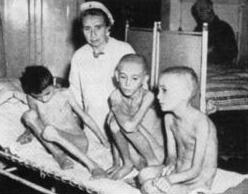
One of the great tragedies of the 20th century was the forced expulsion of ethnic Germans from their homes after the end of World War II. The Allies carried out the largest forced population transfer — and perhaps the greatest single movement of people — in human history. A minimum of 12 million and possibly as many as 18.1 million Germans were driven from their homes because of their ethnic background. Probably 2.1 million or more of these German expellees, mostly women and children, died in what was supposed to be an “orderly and humane” expulsion.[1]
One estimate of the Germans expelled runs to 16.5 million: 9.3 million within the 1937 Reich borders and 7.2 million outside. The Germans within the 1937 Reich borders include 2,382,000 East Prussians, 1,822,000 East Pomeranians, 614,000 in Brandenburg east of the Oder, and 4,469,000 Silesians. The Germans outside the 1937 Reich borders include 240,000 in Memel and the Baltic States, 373,000 in Danzig, 1,293,000 in Poland, 3,493,000 in Czechoslovakia, 601,000 in Hungary, 509,000 in Yugoslavia, and 785,000 in Romania. The Russians did not expel many of their 1.8 million Volga Germans; instead, the Volga Germans were predominately ‘resettled’ within the Soviet Union.[2]
The Early German Expulsions
The expelling nations relied almost exclusively on the use of terror to transport their German minorities across the frontiers. Except in a very few instances, deportations as a result of mob actions did not cause the German expulsions. Rather, the so-called “wild expulsions” were carried out primarily by troops, police, and militia acting under orders and policies originating at the highest levels of the expelling governments.[3]

However great the hazards and miseries of life on the road were for the German expellees, they were usually preferable to the expulsion trains the Polish authorities began to operate. Taking up to two weeks to reach Berlin, the trains were typically not provisioned and lacked the most basic amenities. As a result the death rate on the trains soared. One passenger wrote:
In our freight wagon there were about 98 people, and it is no exaggeration to say that we were squeezed against each other like sardines in a can. When we reached Allenstein people started to die, and had to be deposited along the side of the rails. One or more dead bodies greeted us every morning of our journey after that; they just had to be abandoned on the embankments. There must have been many, many bodies left lying along the track….
The train spent more time stopping than moving. It took us more than 14 days to reach the Russian occupation zone. We rarely traveled at night….After a few days we had no more to eat. Sometimes, by begging the Polish driver, we were able to get a little warm water drawn from the engine….The nights were unbearable because of the overcrowding. We could neither keep upright nor sit down, much less lie down. We were so tightly squeezed together that it was impossible not to jostle each other occasionally. Recriminations and quarrels erupted, even attempts to exchange blows in the middle of this human scrum. The very sick suffered the worst. Typhus was widespread throughout the entire transport and the number of deaths grew with each passing day. You can well imagine the state of hygiene that prevailed in the wagon.[4]
A German priest who witnessed the arrival of German expellees at the border described what he saw:
The people, men, women, and children all mixed together, were tightly packed in the railway cars, these cattle wagons themselves being locked from the outside. For days on end, the people were transported like this, and in Görlitz the wagons were opened for the first time. I have seen with my own eyes that out of one wagon alone 10 corpses were taken and thrown into coffins which had been kept on hand. I noted further that several persons had become deranged…The people were covered in excrement, which led me to believe that they were squeezed together so tightly that there was no longer any possibility for them to relieve themselves at a designated place.[5]
The worst of the violence appears to have been taken against the German minority in Czechoslovakia. A brief but intense outbreak of revenge-taking occurred across Czechoslovakia in May and June 1945 in response to the determination of German forces to continue fighting up to, and even after, V-E Day. Foreign observers and some Czechs themselves were shocked by the scale, the intensity, and the lack of discrimination of the reprisals against German civilians. One writer stated:
The end of the occupation was the beginning of the expulsion of German civilians, if they had survived the first hours and days of brutality. Retaliation was blind. An old woman was defenestrated [thrown out of a window]; a member of a visiting German orchestra was beaten to death in the street because he could not speak Czech; others, not all of them Gestapo members, were hanged, doused with gas and lit, as living torches. Enraged mobs roamed through hospitals to find easy victims there. One [of those murdered] was a Czech patient, who happened to be the father of the writer Michael Mareš, but his papers listed a Sudeten birthplace. From May until mid-October official statistics listed 3,795 suicides of Germans in Bohemia.[6]
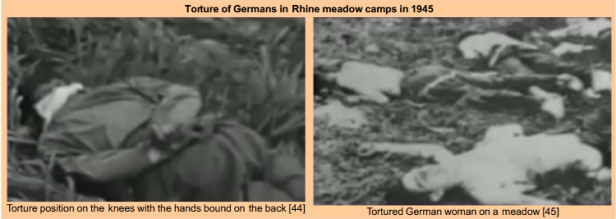
For many Germans an aspect of the expulsions was blatant theft. Czech president Edvard Beneš is quoted as saying:
“Take everything from the Germans. Leave them only a handkerchief to sob into.”[7]
Beneš declared all Germans and Hungarians to be politically unreliable and their possessions were therefore to fall to the Czech state.[8]
The Czech partisans frequently took anything that appealed to them, and sometimes simply moved into a German’s house, adopting the former owner’s possessions. In 1945 there were many instances of farmworkers appropriating German farms, junior doctors taking over German medical practices, and junior managers taking over German businesses. There were cases of pure opportunism: Czechs who had formerly moved in German circles suddenly became the apostles of Czech nationalism and hunted down former German acquaintances. Once the wilder days were over, the new Czech Republic moved to regulate the plunder of German property so that the booty came to the state.[9]
Throughout the summer of 1945, trains of German expellees continued to pour into Berlin and other German and Austrian cities. The Western journalists who had traveled to Berlin to cover the Potsdam Conference were aghast at the scenes they encountered at the railroad stations, with dead and dying littering the platforms. Charles Bray, German correspondent of the London Daily Herald, described finding four dead Germans on a visit to Stettin Station, with “another five or six…lying alongside them, given up as hopeless by the doctor, and just being allowed to die.” Bray discovered the suffering of the German expellees “gave me no satisfaction, although for years I have hoped that the Germans would reap the seeds they had sown.”[10]
An eyewitness report of the arrival in Berlin of a train which had left Poland with 1,000 German expellees aboard reads:
Nine hundred and nine men, women, and children dragged themselves and their luggage from a Russian railway train at Leherte station today, after 11 days traveling in boxcars from Poland.
Red Army soldiers lifted 91 corpses from the train, while relatives shrieked and sobbed as their bodies were piled in American lend-lease trucks and driven off for internment in a pit near a concentration camp.
The refugee train was like a macabre Noah’s ark. Every car was jammed with Germans…the families carry all their earthly belongings in sacks, bags, and tin trucks…Nursing infants suffer the most, as their mothers are unable to feed them, and frequently go insane as they watch their offspring slowly die before their eyes. Today four screaming, violently insane mothers were bound with rope to prevent them from clawing other passengers.
“Many women try to carry off their dead babies with them,” a Russian railway official said. “We search the bundles whenever we discover a weeping woman, to make sure she is not carrying an infant corpse with her.”[11]
The stated rationale during the war for the transfers had been to remove a cohort of dangerous Germans — above all, fit men of military age — who might threaten the security of the countries in which they lived. Instead, it had been women, children, and old men who had been deported, while the fit men had been held back for slave labor.
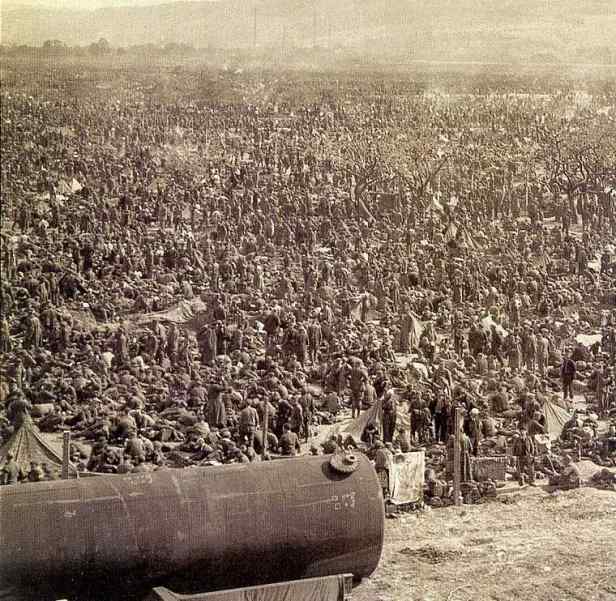
Earl Ziemke wrote of the expelled Germans:
“…Only 12% could be classified as fully employable; 65% needed relief. Contrary to agreements made before the movement to keep families together, the countries expelling Germans were holding back the young, able-bodied men. Of the arrivals 54% were women, 21% were children under 14 years, and only 25% men, many of them old or incapacitated.”[12]
The period of the “wild expulsions” had involved massive state-sponsored programs of violence, resulting in a death toll of many hundreds of thousands of Germans. Yet it was an episode that escaped the notice of many Europeans and virtually all Americans. Now the Allies would attempt to administer the expulsions in the orderly and humane manner specified by the Potsdam Agreement. However, the so-called organized expulsions turned out to be no more orderly and humane than the “wild expulsions” had been.

Endnotes
[1] Dietrich, John, The Morgenthau Plan: Soviet Influence on American Postwar Policy, New York: Algora Publishing, 2002, p. 137.
[2] MacDonogh, Giles, After the Reich: The Brutal History of the Allied Occupation, New York: Basic Books, 2007, p. 162.
[3] Ibid., pp. 94-95.
[4] Ibid., pp. 109-110.
[5] Davies, Norman and Moorhouse, Roger, Microcosm, London: Pimlico, 2003, p. 422.
[6] Demetz, Peter, Prague in Danger: The Years of German Occupation, 1939-1945, New York: Farrar, Straus and Giroux, 2008, p. 235.
[7] Goodrich, Thomas, Hellstorm: The Death of Nazi Germany 1944-1947, Sheridan, CO: Aberdeen Books, 2010, p. 241.
[8] MacDonogh, Giles, After the Reich: The Brutal History of the Allied Occupation, New York: Basic Books, 2007, p. 128.
[9] Ibid., pp. 126-127, 131.
[10] London Daily Herald, Aug. 24, 1945.
[11] Wales, Henry, Chicago Tribune Press Service, Nov. 18, 1945.
[12] Ziemke, Earl, U.S. Army in the Occupation of Germany, Washington, D.C.: Center of Military History, United States Army, 1975, p. 435.
* * *
Source: Wear’s War




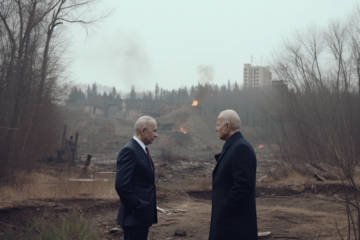
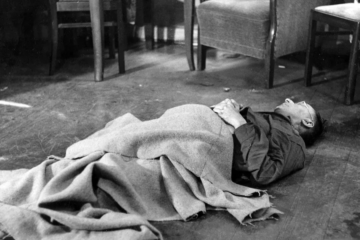
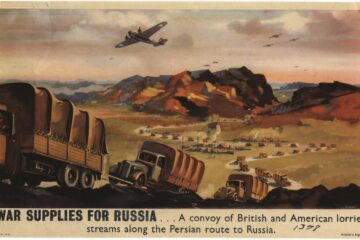
Only a Christian could forgive the Jews….
Ingrid Rimland was a refugee from the Ukraine. Her story is like many survivors of jewish rapine and wanton murder , that continues today in a subtler way. She selflessly shares her intimate story but confides , the worst she would even conceal from her own memory . . One should hope her story ends happily. Her family or mother brought her to America and later she would marry Ernst Zuendel, a Canadian , who would not escape the great censor. The adversary without restraint of law nor contradiction imagines the most theatrical self glorification of the ONE VICTIM war. The story of this god forsaken planet will have only his testimony. But Truth (vincet omnia veritas) condemns today those who will obdurately believe all the calculated lies , making… Read more »